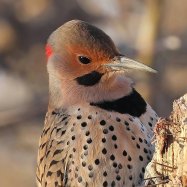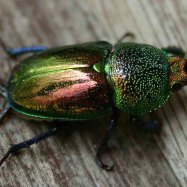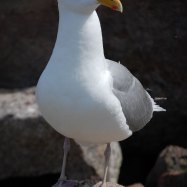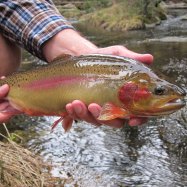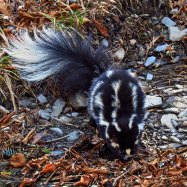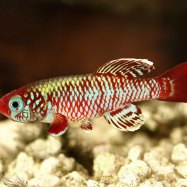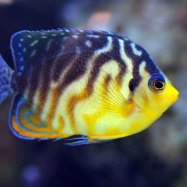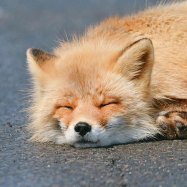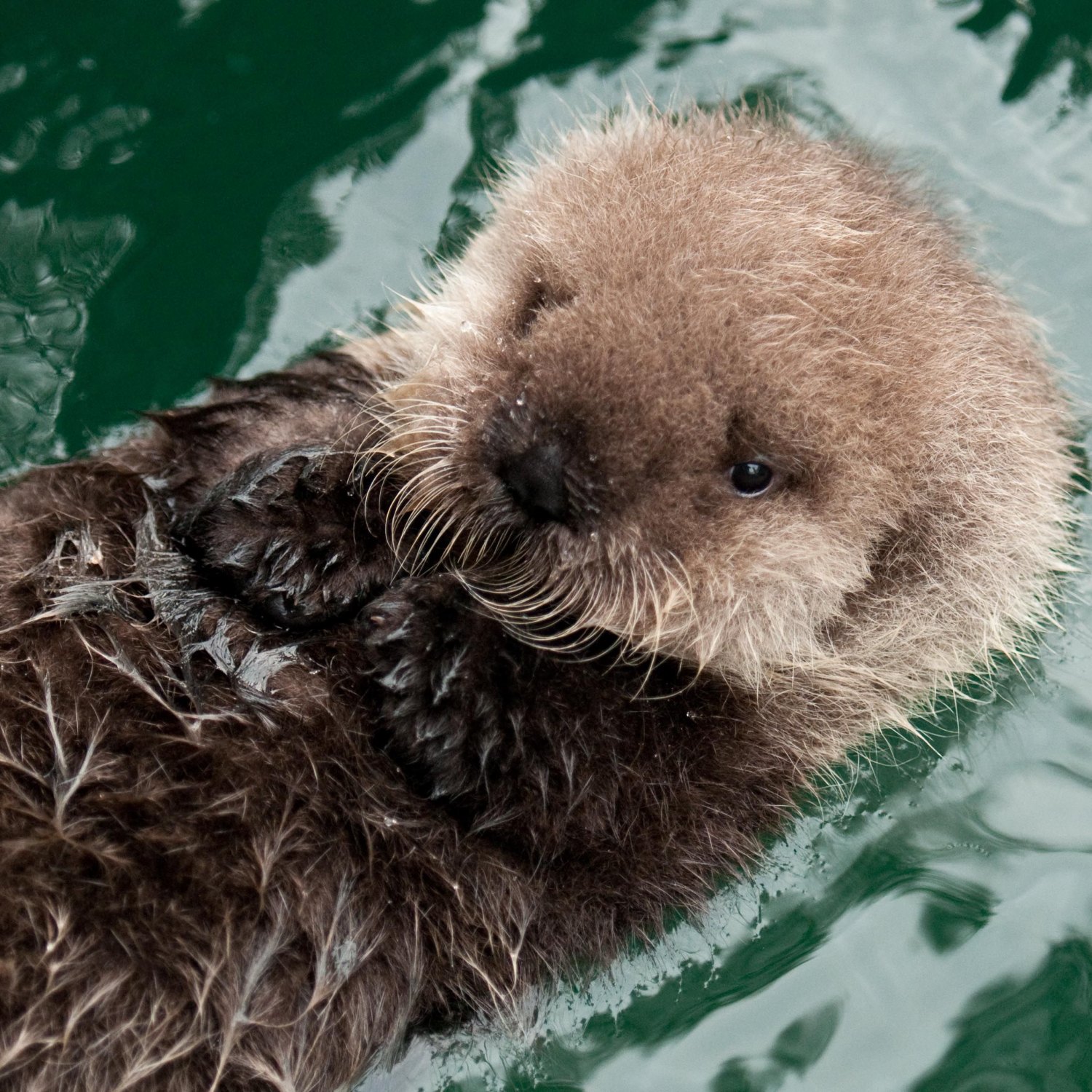
Sea Otter
4 to 5 feet (1.2 to 1.5 meters)
Discover the adorable sea otters, one of the smallest members of the Mustelidae family. These playful creatures roam the coastlines of kelp forests and rocky shores, measuring 4 to 5 feet in length. With their streamlined body shape, they are expert swimmers and hunters in the sea. Get to know more about these fascinating animals and their habitats!
Animal Details Summary:
Common Name: Sea Otter
Kingdom: Animalia
Habitat: Coastal areas, nearshore waters
The Adorable and Resilient Sea Otter: A Marvel of Nature's Design
In the vast expanse of the North Pacific Ocean, there is an animal that captures the hearts of anyone who lays eyes on it - the sea otter. With its petite and cuddly appearance, it is hard to imagine that this animal is one of the most resilient creatures in the ocean. But don't let its charm and cuteness fool you - the sea otter is a powerful and vital part of the marine ecosystem. In this article, we will dive into the world of sea otters and uncover their unique characteristics, habits, and importance in the natural world Sea Otter.
A Family of Mustelids
Sea otters belong to the Mustelidae family, which also includes river otters, weasels, and badgers. These animals have long, streamlined bodies, short legs, and dense fur that helps them regulate their body temperature in cold water. They are found in coastal areas, nearshore waters, and estuaries, making the North Pacific Ocean their natural habitat. While their range extends from the coasts of the United States and Canada to Russia, Japan, and Mexico, they are most commonly found along the western coast of North America.The Carnivorous Sea Otter
Sea otters are carnivores, and their diet mainly consists of invertebrates such as clams, crabs, sea urchins, and abalone. They have an impressive appetite, consuming up to a quarter of their body weight in food every day! Given their small size, it means they have to spend a considerable amount of time foraging for food. This is where their remarkable agility and swimming abilities come into play.Unlike most marine mammals, sea otters do not have blubber to keep them warm. Instead, they rely on their thick fur, which consists of over a million hairs per square inch Scorpion. These hairs trap air close to their skin, creating an insulating layer that keeps them warm in the cold ocean waters. To maintain their fur's waterproof quality, they groom themselves constantly, using their sharp claws to comb through their coat and spread natural oils. This meticulous grooming ritual is not only essential for their survival but also a marvel to watch.
A Curious and Playful Nature
One of the reasons why sea otters are so endearing is their playful and curious nature. They are highly social animals and are often seen floating together in groups called rafts. These rafts can consist of up to 100 otters! They spend a significant amount of time grooming each other, playing, and even sleeping together, holding hands to keep from drifting apart.Sea otters are also known for their intelligence, often using tools to aid in their foraging. They have a pouch in their armpit where they store their favorite rocks, which they use to crack open the hard shells of their prey. They are one of the very few animals known to use tools, making them a fascinating study for scientists.
The Importance of Sea Otters in the Ecosystem
Despite their small size, sea otters play a significant role in their ecosystem. They are considered a keystone species, which means that their presence or absence has a considerable impact on the entire ecosystem. In this case, their presence is crucial.Sea otters are voracious predators of sea urchins, which are known for their destructive feeding habits on kelp forests. By keeping the sea urchin population in check, sea otters indirectly protect the kelp forests, which are important habitats for a diverse range of marine life. This, in turn, benefits other species, such as fish, that rely on the kelp forests for food and shelter.
Without sea otters, the balance of the marine ecosystem could be thrown off, causing a ripple effect that could have detrimental consequences. This is why it is crucial to protect these creatures and ensure their continued existence in the natural world.
The Threats Facing Sea Otters
Unfortunately, sea otters are facing several threats that are impacting their populations. Historically, they have been hunted for their dense fur, which almost led to their extinction in the 18th and 19th centuries. While they are now protected under the Endangered Species Act, they are still susceptible to oil spills, pollution, and overfishing, which can harm their food sources.Climate change is also impacting sea otters in various ways. Rising sea levels, ocean acidification, and changing ocean currents can all have serious consequences on their habitat and food sources. For example, the loss of kelp forests due to warmer ocean temperatures can leave sea otters without a vital food source, causing their population to decline.
Conservation Efforts for Sea Otters
In recent years, conservation efforts have been put in place to protect sea otters. These include legislation, such as the Marine Mammal Protection Act, and the reintroduction of sea otters to areas where they have gone extinct.One success story is the reintroduction of sea otters to Elkhorn Slough in California, where they were previously hunted to extinction. Through dedicated efforts and proper management, sea otters have successfully returned to the area and have even started to expand their range. This serves as a beacon of hope for the species, showing that with proper conservation measures, their populations can thrive.
In Conclusion
The sea otter is a fascinating and adorable creature, with a significant role in maintaining the health and balance of the marine ecosystem. From their unique physical adaptations to their integral role as a keystone species, they are truly a wonder of nature. As we continue to face threats such as climate change and pollution, it is essential to remember the important role that sea otters play in the ocean and take action to protect them for generations to come. So the next time you catch a glimpse of a sea otter floating on its back, take a moment to appreciate this resilient and extraordinary animal.

Sea Otter
Animal Details Sea Otter - Scientific Name: Enhydra lutris
- Category: Animals S
- Scientific Name: Enhydra lutris
- Common Name: Sea Otter
- Kingdom: Animalia
- Phylum: Chordata
- Class: Mammalia
- Order: Carnivora
- Family: Mustelidae
- Habitat: Coastal areas, nearshore waters
- Feeding Method: Carnivorous
- Geographical Distribution: North Pacific Ocean
- Country of Origin: United States, Canada, Russia, Japan, Mexico
- Location: Kelp forests, rocky shores
- Animal Coloration: Brown
- Body Shape: Streamlined
- Length: 4 to 5 feet (1.2 to 1.5 meters)
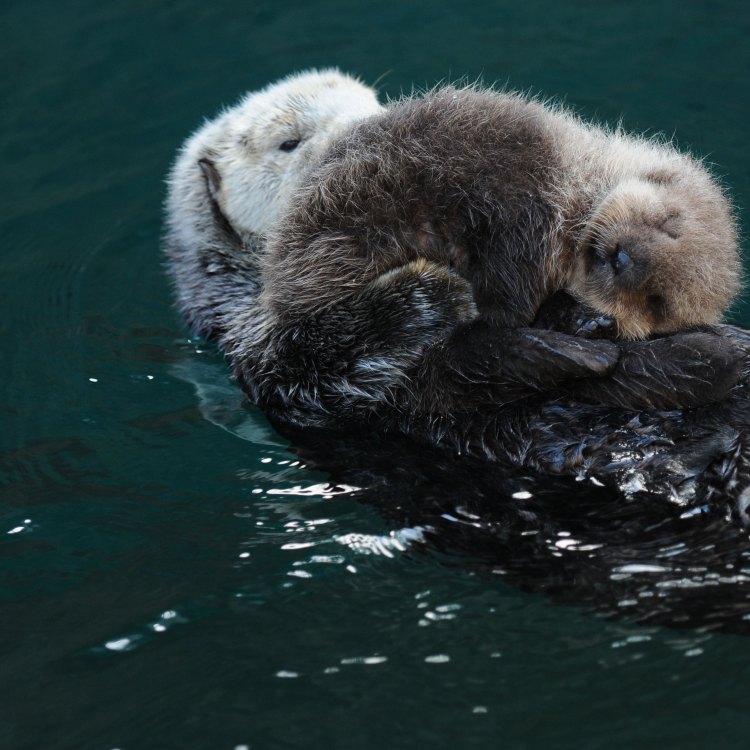
Sea Otter
- Adult Size: 50 to 100 pounds (23 to 45 kilograms)
- Average Lifespan: 10 to 15 years
- Reproduction: Sexual
- Reproductive Behavior: Polygynous
- Sound or Call: Whistles, growls, barks
- Migration Pattern: Seasonal
- Social Groups: Group
- Behavior: Highly social
- Threats: Hunting, pollution, habitat loss
- Conservation Status: Endangered
- Impact on Ecosystem: Keystone species
- Human Use: Fur trade
- Distinctive Features: Thick fur, webbed feet, retractable claws
- Interesting Facts: They use rocks to break open shellfish
- Predator: Great white shark, killer whale
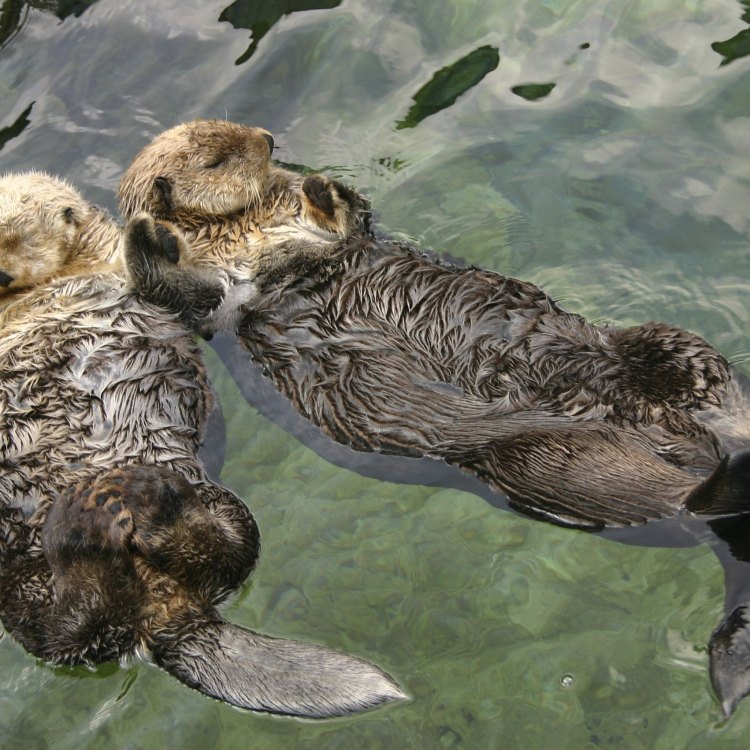
Enhydra lutris
The Mighty Sea Otter: An Endangered and Vital Species
The sea otter, also known as the "keeper of the kelp forests," is a fascinating and vital species that inhabits the waters along the Pacific coast of North America. These adorable and highly social animals are considered to be a keystone species, meaning they play a crucial role in maintaining the health and balance of their ecosystem.Sea otters are distinctive creatures, with thick fur, webbed feet, and retractable claws. They may weigh anywhere from 50 to 100 pounds and have an average lifespan of 10 to 15 years PeaceOfAnimals.Com. However, their unique characteristics and importance in the ecosystem are under threat, making them an endangered species.
In this article, we will delve into the world of sea otters, exploring their behavior, threats and conservation, and their overall impact on the ecosystem.
Reproduction and Social Behavior
Sea otters are sea-dwelling mammals, meaning they give birth and nurse their young in the water. Their reproductive behavior is sexual, with males competing for females during mating season. Unlike monogamous species, sea otters are polygynous, meaning one male may mate with multiple females.
Once a male successfully mates with a female, he will stay with her during the gestation period, which lasts around 8 months. Female sea otters will usually give birth to one pup, which they will care for on their own. The mother will nurse and groom her pup, while also teaching it crucial survival skills, such as how to dive and forage for food.
But sea otters are not just solitary creatures Savu Python. In fact, they are highly social, and they live in groups known as rafts. These rafts are made up of up to 100 individuals, consisting of both males and females, and usually led by a dominant male. They are a playful and curious species, often seen floating on their backs, playing with rocks or shells, or holding hands with their raft mates to stay anchored while sleeping.
Migration and Seasonal Patterns
Sea otters are known for their seasonal movements and migrations. During the winter months, they migrate towards more sheltered coastal areas, where they can seek refuge from storms and strong currents. In the spring and summer, they will disperse and spread out along the coast. This behavior allows them to forage for food and avoid overcrowding in a particular area.
Interestingly, sea otters have a homing instinct, meaning they will always return to the same area where they were born, even after migrating. This is believed to be due to their strong bond with their natal raft, which they develop during their first few months of life.
Threats to Survival
Despite their highly social and playful nature, sea otters face several serious threats to their survival. Historically, they were hunted for their thick, luxurious fur, which led to a significant decline in population numbers. While hunting is no longer a major threat, they are still at risk due to pollution and habitat loss.
Pollution from oil spills, sewage, and chemical runoffs can harm sea otters directly by contaminating their food sources. This can cause illness and even death, as sea otters are voracious eaters, consuming up to 25% of their body weight in food every day.
Habitat loss also poses a significant threat to sea otters. These animals depend on kelp forests for shelter and foraging, and the destruction of these underwater forests can leave them vulnerable to predators and limit their access to food. Human activities, such as fishing and development, have contributed to the decline of kelp forests and, consequently, the decline of sea otters.
Conservation Efforts and Impact on the Ecosystem
Due to the various threats facing sea otters, their population has plummeted, making them an endangered species. However, several conservation efforts are in place to protect and restore their numbers.
The U.S. Fish and Wildlife Service has implemented a strict hunting ban, making it illegal to harm or disturb sea otters. In addition, efforts are being made to reduce pollution and protect kelp forests, creating a safer and more suitable habitat for these creatures.
The conservation of sea otters is not just beneficial for their species, but also for the ecosystem as a whole. As a keystone species, sea otters play a vital role in maintaining the balance and health of their habitat. By keeping sea urchin populations in check, they allow kelp forests to thrive, providing shelter and food for numerous other species. In this way, sea otters indirectly support the survival of many other marine species, making them a crucial part of the ecosystem.
Human Use and Interesting Facts
Unfortunately, humans have not only posed a threat to sea otters, but they have also exploited them for their own gain. The fur trade was the primary reason for the decline in their population, with sea otters being hunted almost to extinction in the 18th and 19th centuries. However, in recent years, their fur has been replaced by synthetic materials, reducing the demand for sea otter pelts.
Despite their endangered status, sea otters are not just another cute animal to marvel at. They are incredibly intelligent and resourceful creatures, exhibiting remarkable behaviors. One such behavior is their use of rocks as tools to break open shellfish. Sea otters are one of the few animals known to use tools, and they have been observed using rocks as hammers to crack open the hard shells of their favorite meal.
Predators and Survival Tactics
While sea otters may be hunted by humans, they also have natural predators in the ocean. Great white sharks and killer whales are known to prey on sea otters, with killer whales even being known to use sophisticated hunting tactics to capture these animals.
To defend themselves from predators, sea otters have several survival tactics. Their thick, waterproof fur provides insulation, while their webbed feet and ability to hold their breath for long periods allow them to swim and dive efficiently. They can also use their retractable claws to defend themselves and hide in kelp forests to escape the sight of predators.
The Importance of Protecting Sea Otters
In conclusion, sea otters are more than just cute and playful creatures. They are a crucial part of the marine ecosystem, playing a vital role in maintaining the health and balance of their habitat. Their plight serves as a reminder of the impact human activities can have on the environment and the importance of conservation efforts.
By protecting and preserving sea otters, we not only ensure the survival of a unique and fascinating species, but we also contribute to the overall health of our oceans. The sea otter is a symbol of hope and resilience, showing that with the right conservation strategies and efforts, we can make a positive impact and prevent the extinction of a vital species. We must all work together to ensure this charming and extraordinary animal continues to thrive and flourish for generations to come.
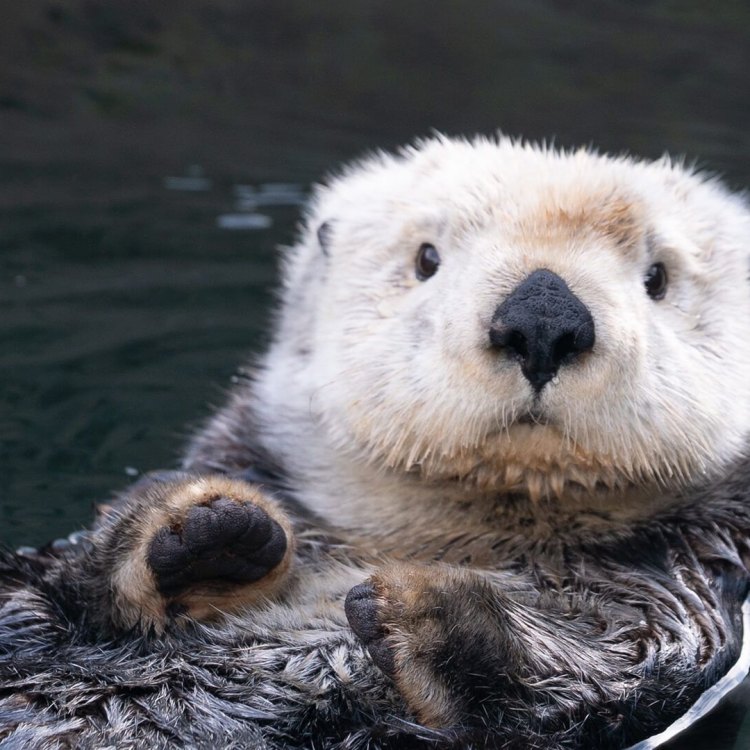
The Adorable and Resilient Sea Otter: A Marvel of Nature's Design
Disclaimer: The content provided is for informational purposes only. We cannot guarantee the accuracy of the information on this page 100%. All information provided here may change without prior notice.

